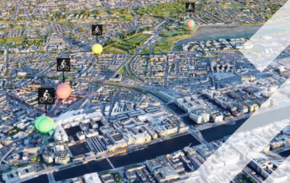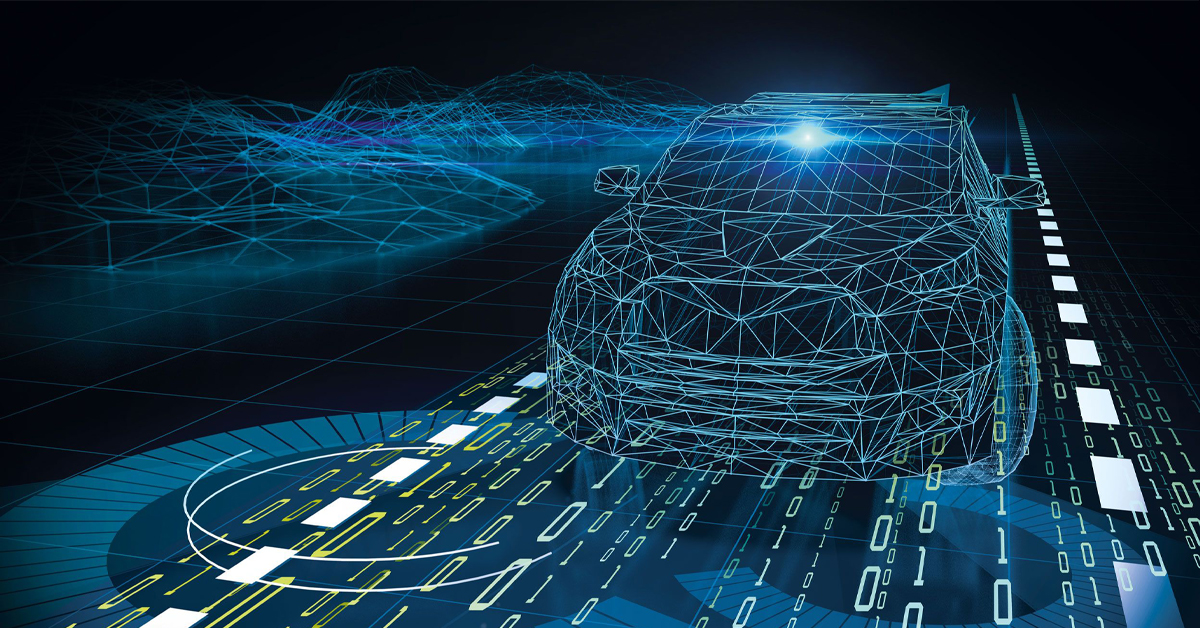The combination of unified data sets and smart city data analytics that are available to multiple organisations and transport users is a sure-fire, win-win situation…
At its core, a smart city is one that connects information and communication technologies to share data. Data from Internet of Things (IoT) applications, sensors, and existing city partner systems is used for analytics to drive new value. This includes open-source data, crowd-sourced data, and data from other connected devices or sources. Many municipalities are now implementing aspects of smart cities and realizing the benefits. However, most are settling for only a fraction of the full range of opportunities and returns that a smart city can offer. That’s because they’re not integrating and persisting all available data, analyzing it, and then using the insights to drive value for their constituents.
One of the essential elements of a smart city will be next generation mobility. “Next generation” will mean new technologies and combinations of public and private sector activities. Connected and autonomous vehicles, MaaS (mobility as a service), movement analytics and smart phone applications that connect citizens and travelers, will deliver enhanced mobility in the smart city environment. This will ensure that urban citizens and visitors will be offered an equitable value proposition that enables them to achieve the levels of mobility required to support access to job opportunities, healthcare, education, and leisure activities. Inhabitants of the future smart city will have advanced levels of mobility to support economic well-being and their chosen lifestyles.
Next generation mobility will take advantage of advanced technologies to provide travelers with a wide range of options and carefully match the variations in transportation demand with supply. To enable this, it will be necessary to have a clear and complete picture of both transportation supply and demand at any given time in the smart city. This will require connectivity, adaptability, and a clear understanding of current transportation conditions, current demand for transportation and the status of the transportation services that satisfy the demand.
Next generation mobility will take advantage of advanced technologies to provide travelers with a wide range of options and carefully match the variations in transportation demand with supply.
The delivery of transportation services in a smart city will be guided and influenced by insight, understanding and appropriate response strategies. While extensive use is made of advanced technologies in urban transportation today, it is apparent that the role of data will become increasingly important, to the point where it would be reasonable to consider as the fuel for next-generation mobility.
THE GREAT ENGINE ANALOGY PART 1
An interesting analogy lies in the use of the internal combustion engine. Petrol is put in the tank, and it fuels the engine to provide the motive power that is required to take people what they want to go. In a similar manner, it is necessary to obtain data and put it into an engine of some kind to harness the full power of the data. The engine converts the fuel into power. In turn, the power of the engine must be turned into action or motion before results can be achieved. In the case of the automobile, the transmission and the wheels turn the power into forward motion. In the case of data, the engine is Smart Data Management, and the forward motion is created by using Smart Data Management to develop appropriate responses and service delivery strategies. Note that Smart Data Management could be both a verb and an adjective – an action and a solution.
An internal combustion engine converts gasoline into forward motion. Smart Data Management converts data into information into insight and into action. These four steps are interlocked with the value not achieved until the last step. This makes it essential to develop approaches to Smart Data Management that take us all the way to action. So, what is Smart Data Management?
Well first, it does not just happen on its own. Smart Data Management requires that the entire framework has been engineered and is designed to achieve a specific set of results. It will also address a very wide and flexible range of questions, rather than being focused on a narrow range of predefined questions. Second, it will be designed to obtain and use data from multiple data sources, some of these will be traditional and some nontraditional. For example, traditional traffic speeds and volumes will provide insight into current traffic conditions.
TRANSACTIONAL ACTION
Non-traditional data such as retail or credit card transactions, could provide additional insight into why the travel is occurring. The Smart Data Management system will be able to establish and manage a “data lake” containing a wide variety of traditional and nontraditional data. The data lake will make a wide range of data accessible to enable advanced analytics to be applied to extract the insight and understanding need to define appropriate action. A practical approach to Smart Data Management will begin by addressing a few key problems but be flexible enough to address a wider range of problems later. The Smart Data Management system may begin with a focus on transportation but should have the flexibility to accommodate other aspects of the smart city in the future.
The Smart Data Management system will be able to establish and manage a “data lake” containing a wide variety of traditional and nontraditional data.
These aspects might also include energy, education, public safety and enhancing the places to live and work, and eGovernment initiatives, among others. It is also worth defining what Smart Data Management does not do and what we are trying to avoid. It does not support silos of data. It does not support a “cockpit” of data and tools that enable specific job functions. It does not grow without a plan.
One of the challenges in the application of advanced technology to smart cities is that it is essential to achieve early, bottom-up results. However, the best results are obtained overall when these early actions are part of a larger plan that aligns and converges all activities. The experience of developing and applying a Smart Data Management system must be engineered. One way to protect is put it “the user is going to have an experience whether you like it or not, the question is “was the experience designed and does it deliver the results were anticipated?” Perhaps the whole business of applying advanced technology in urban areas could be summed up as achieving the effects while avoiding the undesirable side effects?
The undesirable side effects of poor data management lie in duplicate investment in data collection and an increased cost of retrieving the data required for effective decision support. Silos might be good for the individual, but they are bad for the overall information health of the enterprise.
The undesirable side effects of poor data management lie in duplicate investment in data collection and an increased cost of retrieving the data required for effective decision support.
THE GREAT ENGINE ANALOGY PART 2
So, back to the internal combustion engine analogy. In the same way that cars are made up of individual components that can come from multiple manufacturers, a Smart Data Management system can be sourced and supplied by an ecosystem of partners. It is not necessary to put all your eggs in one basket, advantage can be taken of the significant investment that companies have placed in taking technologies and developing them into robust products.
History has something to teach in this respect. Alexander Graham Bell could produce intelligible speech from his telephone invention on 10 March 1876. It was not until around early 1900s that the telephone came into wide scale commercial use. That is a gap of around 15 years from invention to commercialization. During that time the invention was transformed into a product that ordinary, everyday people could use to achieve results with little or no effort required for operation.
SUMMARY: DATA AS FUEL
To summarize, moving forward with the insight and understanding of smart city services and processes, it is necessary to have fuel and an engine to convert the fuel into action. It is not difficult to perceive that data is the fuel that will take smart cities and transportation into the future, revealing new mechanisms and better ways to manage services and wider elements. Provided of course that an appropriate engine has been acquired that enables a focus to be placed on the things to be achieved while minimizing the resources required to establish and operate.
It may also be a useful consideration that now would be a good time to secure sources of fuel, in other words identify data sources and establish arrangements to access them. Just like automobiles, there is a wide range of choices when it comes to the data engine. It is important that the choice of engine matches both current needs and provides the flexibility to meet future needs.
In modern society, transportation has become a critical element in delivering mobility and accessibility. In the same way Smart Data Management will become a crucial element in delivering action and results within a scientific approach that makes the maximum use of the data available. Are the investments made today, and the ones planned for tomorrow, adequately informed by insight and understanding? New sources of data and new possibilities in data science are delivering the opportunity for scientific approaches to all aspects of transportation service delivery today.
The future lies in multiple transportation users having access to a world-class unified data set and analytics served up by a highly efficient process that starts with multi-source data, creates information, extracts insight and enabled better response plans and operational management.
Read more articles about smart mobility
CERTIFIED INTELLIGENCE
FIVE TRANSPORT SOLUTIONS WE WOULDN'T HAVE THOUGHT POSSIBLE TEN YEARS AGO
SHIFTING THE MOBILITY PARADIGM - PART I
SHIFTING THE MOBILITY PARADIGM - PART II
.png?h=628&iar=0&w=1200)


